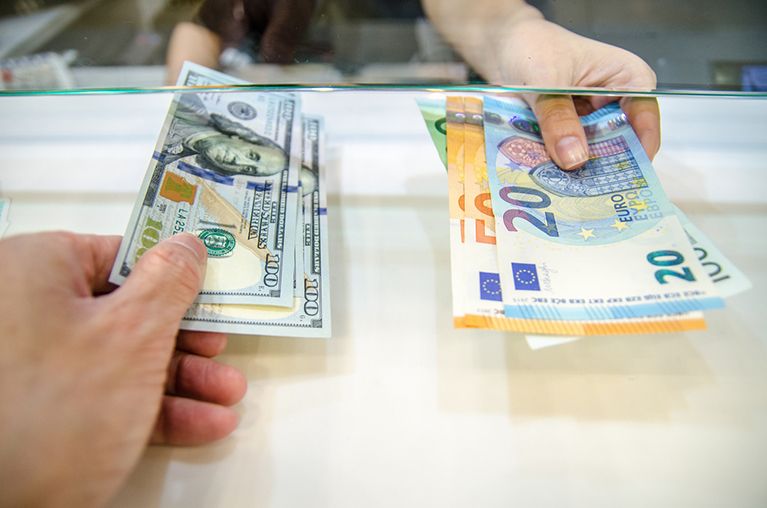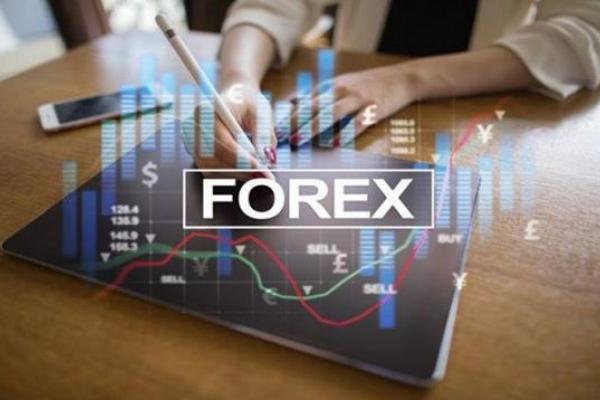What is Forex? A comprehensive guide for beginners
The term "Forex" — also known as foreign currency trading, currency exchange or by its acronym "FX" — refers to Foreign Exchange or to transactions between currencies. Today, it is considered to be the most important exchange market in the world with over $5 trillion traded every single day. The combined volumes of all the stock markets in the world do not even come close to this figure. But, what does that mean to you? Well, if you take a closer look at the currency market, you're sure to come across some intriguing trading opportunities that you won't find with other investments.
Now, everyone will have experienced this kind of trading at some time or another, the obvious example being when they travel to another country and exchange their currency for the local one. Simple, right? That's the basic principle of Forex investments.
As for the price of each currency, that varies depending on its demand in relation to other currencies. In other words: the more in demand a given currency is, the higher its price will be and vice versa.
If you're still wondering exactly what Forex is, let's just say that it's basically a decentralized marketplace where you can trade all the major world currencies. It encompasses a wide range of different market actors, from the world's largest financial institutions dealing in big money transactions all the way to ordinary people converting a few dollars here and there. But they all have the same end goal — they either want to buy a currency and then sell it for more than they paid, or else sell a currency and then buy it back for less money.
To join the ranks of those already trading on the Grand Bazaar of exchange markets that is Forex, all you need is a computer, an internet connection and a trading account to complete your transactions. Yes, it really is that quick and easy!
How does Forex Trading work?

The aim of Forex trading is to profit from changes in the value of one currency relative to another. You can make a profit by buying a currency and then selling it at a higher price, or by first selling it and then buying it back at a lower price.
To understand how this works in practice you need to understand what exactly a currency pair is. Currencies are priced relative to other currencies. If you buy Euros (EUR) the price you pay will depend whether you are exchanging US Dollars (USD), British Pounds (GBP) or another currency for those Euros.
A currency pair consists of a base currency and a counter or reference currency. The base currency is the first currency in the quote, and the counter currency is the second. The counter currency is the reference currency in which the base currency is being quoted.
Let’s take an example of the EUR/USD being quoted at 1.1017-1.1019. In this example, the EURO is the base currency and the USD is the reference currency. The Euro price is being quoted in USD. So, you would pay 1.1019 USD, to buy 1 Euro. If you wanted to sell 1 Euro, you would receive 1.1017 USD.
For most pairs, the most liquid currency is usually quoted first. However, when the USD is paired with the British Pound, Euro, New Zealand Dollar, or Australian Dollar, the USD is quoted second.
If the base currency is a foreign currency, the quote is known as a direct quote. If the base currency is the domestic currency, the quote is known as an indirect quote.
Currency pairs are divided into three categories:
- The most widely traded currency pairs in the world are known as the majors. They include the EUR/USD, USD/JPY, GBP/USD, AUD/USD, USD/CHF, NZD/USD and USD/CAD. You will notice that these pairs all include the USD.
- Currency pairs that include two of the currencies listed above, but not the USD, are known as minor currency pairs. These pairs are also known as cross currency pairs or crosses. Examples include EUR/GBP, AUD/JPY and GBP/CAD.
- Exotic currency pairs include one major currency and one other. The second currency is usually the currency of a developing nation like Turkey, Thailand or South Africa. However exotic currencies also include those of quite developed nations like Singapore and Hong Kong.
An important aspect of Forex trading is liquidity. If two countries have a healthy trading relationship, the currency pair with their two respective currencies should be very liquid. On the other hand, a currency pair that includes the currencies of two countries that don’t have trading relationships may be illiquid.
The major and minor currency pairs are the most popular to trade due to high liquidity levels. These pairs can be traded on any time frame as the spread is narrow. Exotic pairs can be traded but require larger price movements to cover trading costs. This means you will need high levels of volatility, or a longer time frame.
Types of Forex trading strategies
There are several approaches to analyzing and trading currencies:
- Fundamental analysis considers the difference between the economies of two countries and how that may affect the relative strength of each currency. This includes interest rates, money supply and trade balances.
- Technical analysis considers the price action of the pair. Price patterns, indicators and support and resistance levels are used to identify profitable trading opportunities.
- Traders also use news, market sentiment and algorithms to identify potential trading opportunities.
- Scalping strategies take advantage of short-term price movement that may last seconds or minutes to generate profits.
- Day traders use technical analysis to identify trades to hold minutes to hours. They close all positions at the end of the day.
- Swing traders hold positions for a few days to take advantage of larger price swings.
- Position traders and trend flowers hold positions for as long as few years. They follow major trends, or trade price patterns.
Lot sizes and how to calculate position size
One of the more confusing aspects of Forex trading is calculating the size of a position. The size of a position, which is the size of its exposure to the market, depends on the traded price, the lot size, and the number of lots.
So, what is a lot? A lot is the standardized trade size for Forex. One lot is 100,000 units of the base currency. So, if you buy 1 lot of EUR/USD at 1.1019, you are buying 100,000 Euros and you will be paying $ 110,190.
You probably noticed that if you are trading a lot size like that your minimum trade size would be quite large. Fortunately, you can also trade smaller lots:
- Mini lots are 10,000 units of the base currency
- Micro lots are 1,000 units of the base currency
- Nano lots are 100 units of the base currency.
How to learn to trade Forex

Any type of trading requires ongoing learning. It’s not like becoming a doctor where you first learn and then do. In the case of trading you need to simultaneously learn and practice what you learn.
You can start out with a demo account (which you can do for free with Libertex) but your learning curve will speed up when you have ‘skin in the game.’ Some of the most important lessons to learn concern the way you react when you make money and when you lose money. So, it’s a good idea to graduate to a live account as soon as you feel confident trading with a demo account.
To improve your knowledge, you should read books on trading, technical analysis and technical analysis. For Forex traders its worth learning about economics and monetary policy too, as this is what drives the value of a currency. There are also lots of very good videos and blogs on these topics available on the internet for free.
Finally, you should keep a journal, set goals and track your progress. The more systematic you are about the process of learning the more efficient your learning curve will be.
Why to trade with Libertex?
- access to a demo account free of charge
- technical assistance to the operator 5 days a week, 24 hours a day
- leverage up to 1:500
- operate on a platform for any device: Libertex and Metatrader 4 and 5
- no commissions for extractions in Latin America




